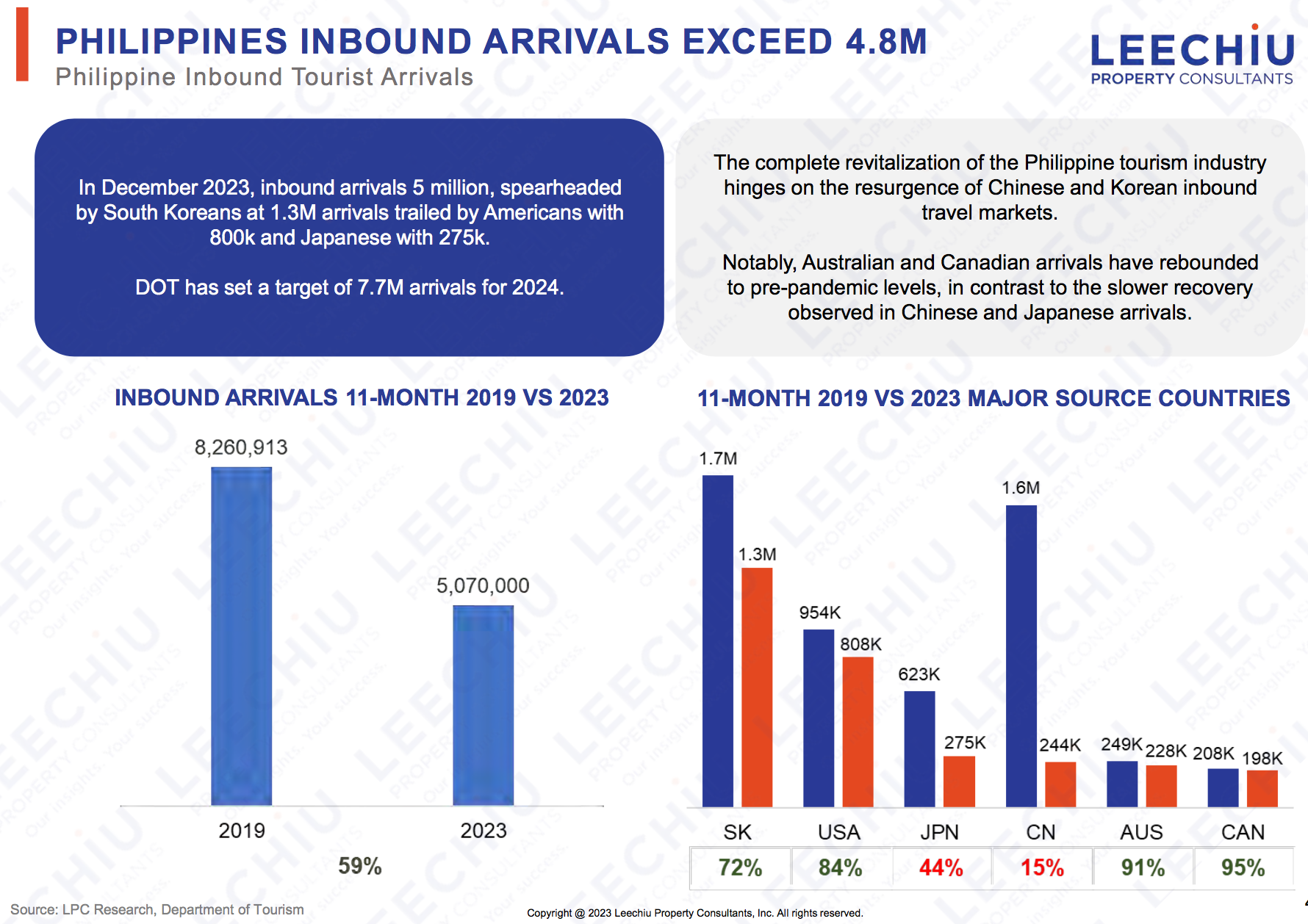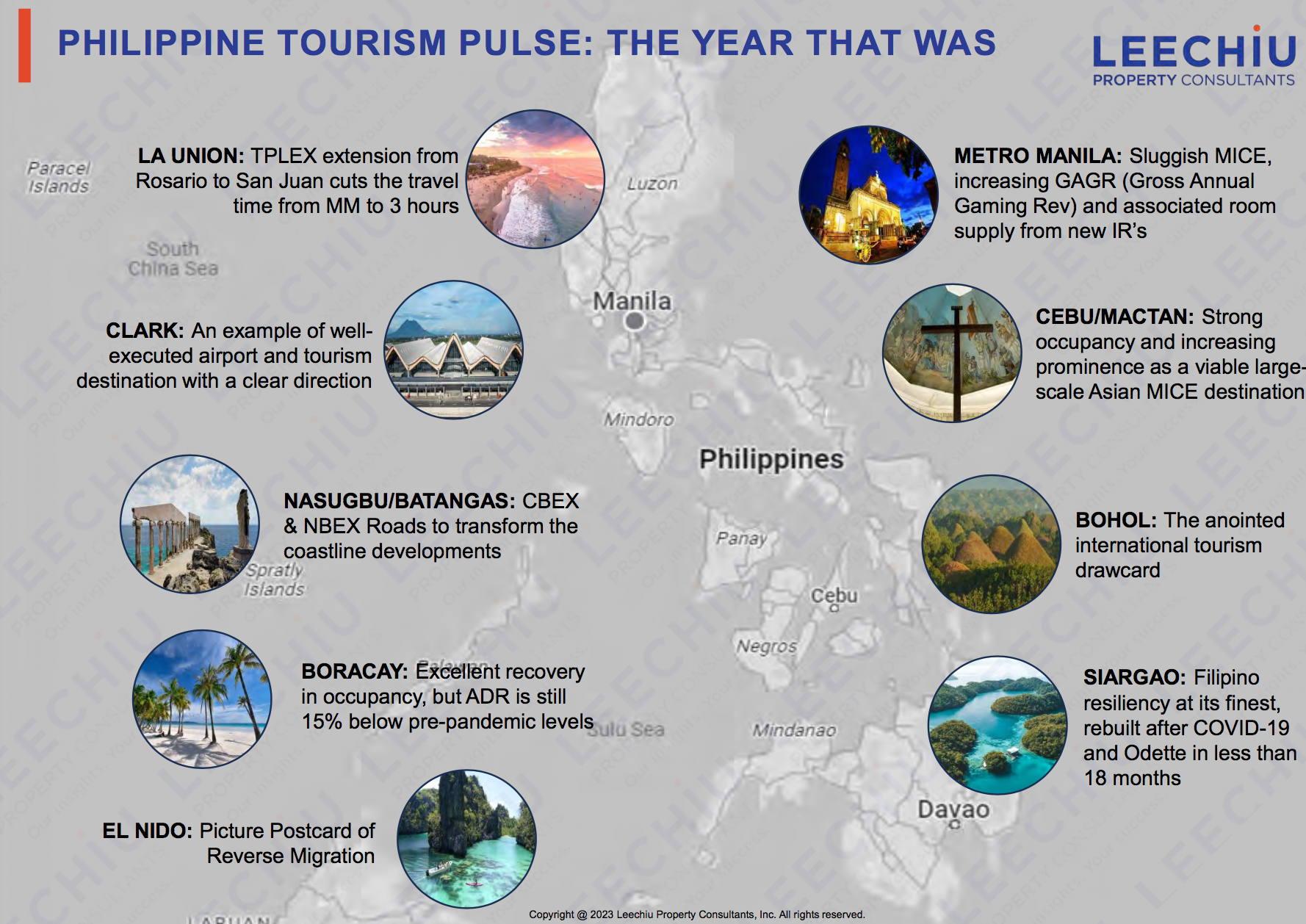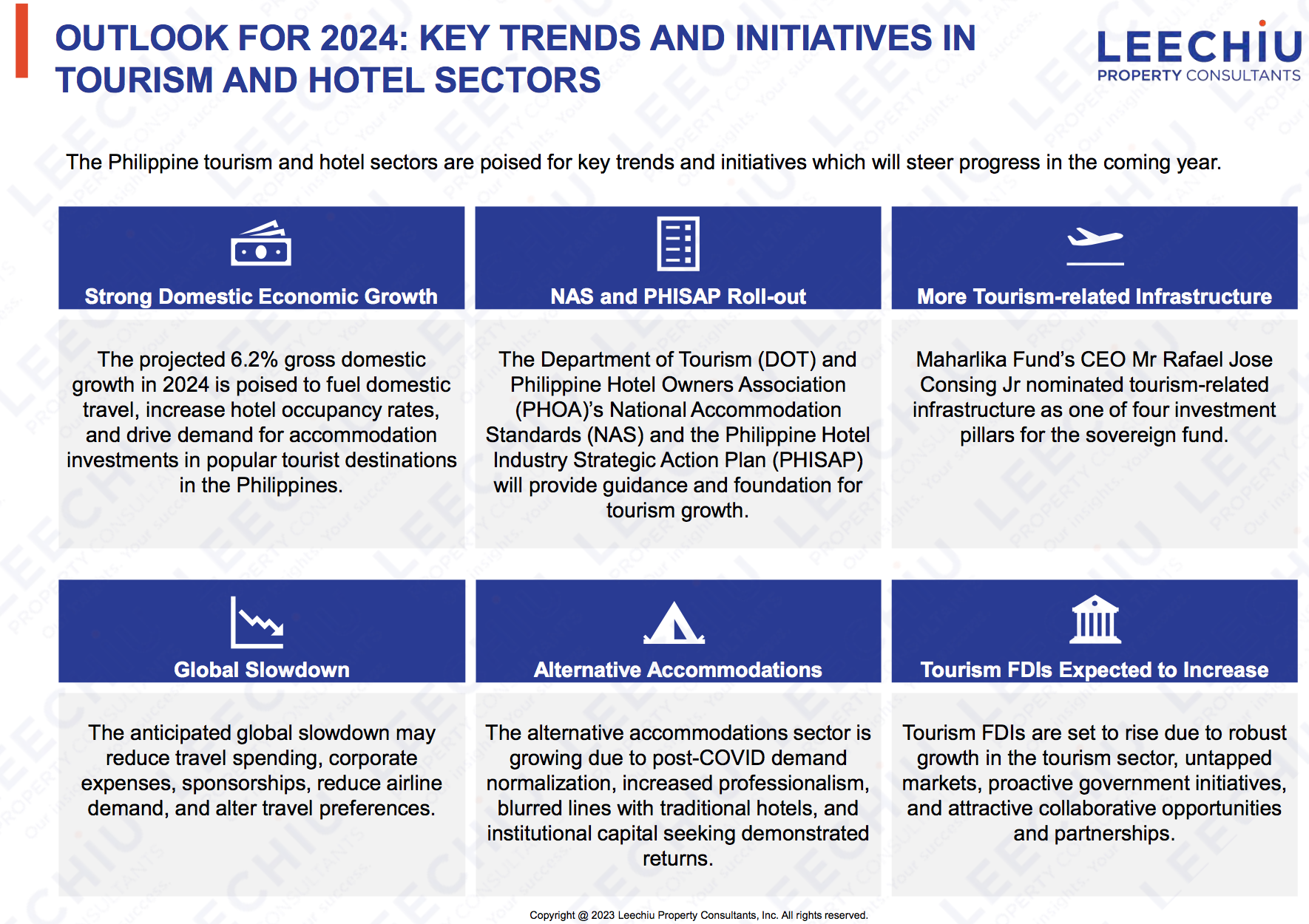Philippine tourism experienced a remarkable resurgence, largely driven by the resilience of domestic travel, according to a study by Leechiu Property Consultants LPC.
“The strength of local tourism proved instrumental in mitigating potential challenges from international source markets, namely China and Japan. Despite uncertainties in these external markets, the country's focus on boosting internal tourism significantly bolstered the industry's stability and growth,” LPC said.

It noted that, “surpassing the Department of Tourism’s (DOT) initial target of 4.8 million international arrivals in 2023 was a testament to this recovery. However, aiming for the 2024 target of 7.7 million international tourists will pose a more significant challenge.”
LPC Director for Hotel, Leisure, and Tourism Alfred Lay anticipates key trends for the forthcoming year, emphasizing the need for innovative strategies to navigate the ever-evolving landscape and harness the maximum potential of the tourism sector.

“A particularly exciting development is the growth of Tourism Foreign Direct Investments (FDIs). Over the past year, there has been a notable increase in foreign investors recognizing the Philippines as a prime investment opportunity,” he noted.
Lay added that, “this trajectory will likely persist through 2024, propelled by the robust expansion of the tourism sector, untapped markets, proactive government initiatives, and collaborative opportunities and partnerships. These factors collectively position the country an attractive destination for FDI in the tourism sector.”

The projected 6.2 percent gross domestic growth in 2024 is poised to fuel domestic travel, boosting hotel occupancy rates and driving demand for accommodation investments across popular tourist destinations.
Acknowledging this potential, the government is actively working to launch the National Accommodation Standard (NAS) and the Philippine Hotel Industry Strategic Action Plan (PHISAP) over the next year.
Spearheaded by the Department of Tourism (DOT) and the Philippine Hotel Owners Association (PHOA), these initiatives aim to provide the hotel industry with a robust foundation and guidance for tourism growth.
“With a bold target of 12 million foreign tourist arrivals by 2028, there’s an urgent need to boost hotel investments in the next four years to accommodate the anticipated influx of tourist numbers,” Lay said.
Another initiative from the government to look forward to is the establishment of the Maharlika Fund whose President and CEO Rafael Jose Consing Jr. nominated tourism-related infrastructure as one of its four investment pillars.
He highlighted vital projects such as the New Manila International Airport in Bulacan, the rehabilitation of the Ninoy Aquino International Airport, the Laoag International Airport Development project, and the upgrade of the Laguindingan Airport as vital projects.
The prioritization of tourism-related infrastructure is regarded as a strategic move, given its potential to boost the country’s tourism sector.
Lay said that, "within the realm of hotel development, a prominent trend is emerging: the rise of alternative accommodations.”
Fueled by the normalization of post-COVID demand, a focus on professionalism, and the blurring distinction from traditional hotels, these alternatives include unique experiences like glamping, converted buses, and container lodgings.
“This diversification stands as a response to the challenges posed by funding rates, loans, and construction costs in traditional hotel development,” Lay pointed out.
He noted that, “amidst projections of a global economic slowdown that might challenge the tourism industry, all eyes are on the authorities to navigate these uncertainties.
“The hope is that the sector will endure potential disruptions, considering its fundamental role in the country's economic landscape.
“Despite the anticipated global slowdown, however, the future of Philippine tourism remains promising due to strong domestic economic foundation, strategic initiatives from the government, and the foresight of both local and international investors.”